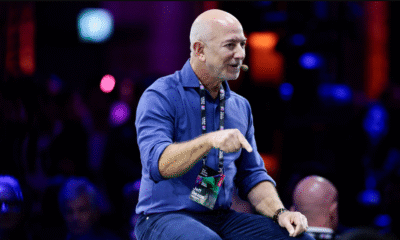Business
There’s nothing alarming about rise in MSME bad loans: RBI
The Reserve Bank on Friday allayed the fears of lenders about the rising delinquency levels among small business loan borrowers, who are hit hard by the COVID-19 second wave, saying the numbers are not alarming yet.
The government and the central bank push to support MSMEs during the pandemic through credit measures like the emergency credit line guarantee scheme (ESLGS) saw lending to them jumping to Rs 9.5 lakh crore in the pandemic-hit FY21 from Rs 6.8 lakh crore in FY20, while the asset quality deteriorated to 12.6 per cent as of March 2021 from 12 per cent in December 2020.
Addressing reporters virtually at the customary post-policy presser on Friday when the central bank left the key policy rate unchanged at 4 per cent, RBI Deputy Governor Mukesh Jain said there is no crisis now on this front, as the stress level among small business borrowers are not very high, even though slippages and loan restructuring are rising of late.
The situation is not very bad as many accounts are going in for restructuring under the COVID package version 2 announced in May, which allowed crisis-ridden borrowers to opt for up to two years of the moratorium, he said.
Yes, there is a visible increase in slippages among MSME borrowers, but the quantum of slippages has not reached an alarming level, Jain said.
We are constantly monitoring all the regulated entities, particularly banks and large NBFCs to check their asset quality. Our stress tests also prove that there is nothing alarming as of now, he added.
A July 28, 2021, report by Sidbi-Cibil said the NPA levels among MSME borrowers have surged to 12.6 per cent in the March 2021 quarter, from 12 per cent in December 2020, while loans to them have jumped to Rs 9.5 lakh crore in FY21 from Rs 6.8 lakh crore in FY20.
After the first wave, the RBI had asked all banks and systematically important NBFCs to take the stress tests, and their pre-COVID and March 2021 numbers show that there is an all-round improvement on all parameters, be it capital adequacy ratio, NPAs/slippages or the provision coverage ratio — all have improved and are better than the pre-pandemic levels, Jain said, adding there is also an improvement on their profitability numbers.
It can be noted that since the pandemic hit the nation in March last year, the government and the central bank have been encouraging lenders to offer easy credit to small businesses, numbering over 6.3 crore, as they are the backbone of the economy in terms of employment and contribution to the GDP. But most of the support is in the form of credit, a portion of which was guaranteed by the government in case of defaults.
Also Read: Covid 3rd wave may pull GDP growth down to 7 pc: economist Abhijit Banerjee
Last week, Union MSME Minister Narayan Rane had told the Lok Sabha that around 1.09 crore MSME borrowers were given the promised guarantee support of Rs 1.65 lakh crore under the emergency credit line guarantee scheme up to July 2, 2022, which was announced as part of the first COVID package in May 2020 to help them meet their operational liabilities and resume businesses.
But, the number shows that only less than a sixth of eligible MSME borrowers could avail of the facility, as there are over 6.3 crore MSMEs in the country as of May 2021. Many reports said many of them have downed the shutters due to the pandemic.
The overall cap of admissible guarantee of ECLGS was raised from Rs 3 lakh crore to Rs 4.5 lakh crore in late June 2021. The government on its part had cleared the dues of Rs 55,863.30 crore to MSMEs between May 2020 and July 2021.
The Cibil-Sidbi report said the credit demand from the MSME segment surged, courtesy of the interventions like emergency credit line guarantee scheme, specifying that loans worth Rs 9.5 lakh crore were disbursed to MSMEs during the pandemic-hit FY21 as against Rs 6.8 lakh crore in FY20. The jump in credit led to stability in the overall NPAs level when compared to 12.5 per cent in FY20.
The commercial lending exposure stood at Rs 74.36 lakh crore in March 2021, with a growth rate of 0.6 per cent, while the MSME segment’s credit exposure grew 6.6 per cent to Rs 20.21 lakh crore.
Credit disbursement to new-to-bank MSME customers had dropped 90 per cent in April 2020 compared to the pre-pandemic levels and had gradually recovered to be 5 per cent higher than the pre-pandemic levels in March 2021.






































